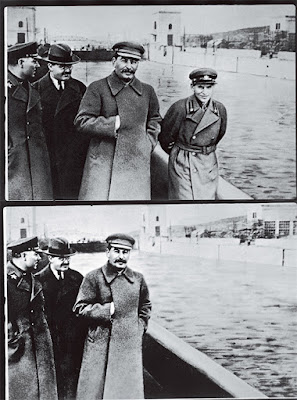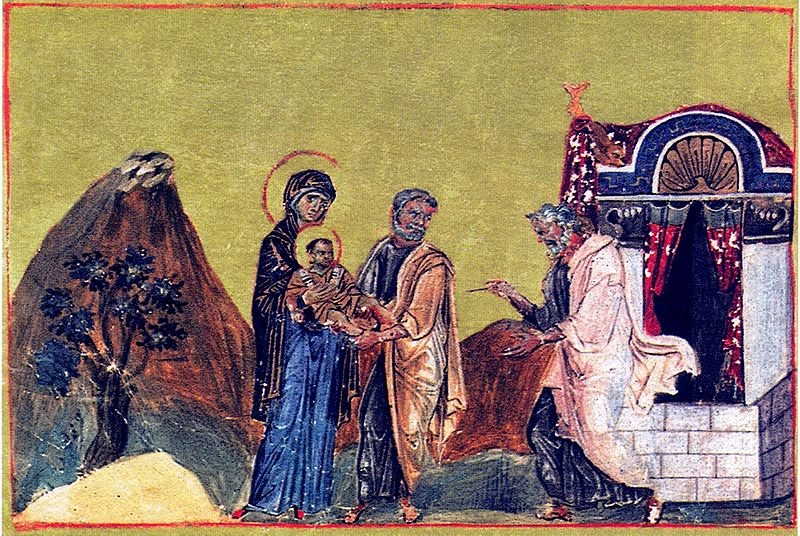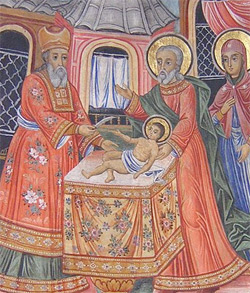The decline of the Catholic Church as an institution in Western human societies is like a negatively sloping equation that in the 20th century hit its inflection point and changed from a soft decline into a quickly dropping roller coaster. For older Catholics better days remain within fleeting living memory. Churches were full, schools were orthodox, Mass was tolerable, vocations were abundant, the pope was binding and loosening, and God watched over the whole thing. Then it all fell apart in the United States, a century after the same transpired in Europe.
Declines and resurgences characterize the history of the Church. After the legalization of Christianity under Constantine the Church enjoyed growth and imperial privilege. The emperor, himself a pagan baptized into Arian Christianity on his death bed, built great basilicas on the tombs of the two greatest Apostles. When Rome fell, Byzantine Christianity ascended, imbuing the Church with a vibrant and varied sort of faith, melding the excesses of Constantinopolitan cathedral worship with ascetic desert theology. Europe's dark age and papal pornocracy permitted the spread of monasticism, which reformed the papacy and turned the Vicar of Peter into the "ruler of the world, earthly resident of our Lord Jesus Christ", who guarded the Church from the ill intentions of both the Muhammadans without and the kings within. Following the corruption of the Renaissance Curia, the Reformation, and the tragic fall of Constantinople came Trent and the reviving force of the Jesuits and Oratorians; the conversion of the Americas after the miracle of Guadalupe almost compensated for the loss of England, the Germanic countries, and the East. Catholics hope for a resurrection of the Church today, but are wondering from where it will come. The Council of Trent closed 46 years after Luther profaned the doors of the Wittenberg cathedral. 46 years after the imposition of the Mass of Paul VI, there is no hint of recovery outside a few isolated communities.
A popular romance with the early Church emerged in the 20th century and the pessimistic are, understandably, smitten with it. A Melkite priest once speculated to me that within a generation the institutional Church would vanish and that we would return to the primitive house churches, where a priest who occupied a day job would serve the liturgy in the evening or the early morning. Consternation underscores a frustration with the collapse of the established Church. One cannot fathom a recovery using the same structures and methods of what has passed. Fr. Anthony has even called for a "
hard reboot" of Western Christianity along the lines of the primitive Church, while recognizing that Christ's presence on earth and the preaching of His apostles was within living memory of those believers.
The collapse has hit its breaking point in the northeastern United States, where material comfort has kept those at home who wish to remain home and permitted those who wish to attend Mass to do so at their leisure. Hispanic immigration delays this inevitability in the United States; the emotive Hispanic culture will find evangelical Protestantism more entertaining in one generation and disbelief much easier in two generations.
The decline of institutional Catholicism means fewer parishes, fewer schools, fewer charities, and fewer Knights of Columbus events. No more special dinners to "put a pool in a Catholic school." In a twist of irony the very bishops who earned their episcopal promotions for good administration and fundraising preside helplessly over devolution.
Is a return of the institutional Church in the cards? Or will we have to follow Fr. Chadwick's advice and "hard reboot" the Church? In past ages the Church responded to the needs of the times both by pastoral changes and new paradigms in Christian life. Lateran IV began its decrees with a definition of the Church and proceeded both to condemn clerical corruption and mandate Communion at least bi-annually; contemporaneous with Innocent's council, Dominic of Guzman and Francis of Assisi were revitalizing the religious life through orders which lived in poverty, one for preaching, the other for praying. Trent's doctrinal clarity and lamentable liturgical standardization accompanied the foundation of the Society of Jesus, in its more orthodox days, and the Congregation of the Oratory. Even in France and England, 19th century revivals coincided with the return of Benedictine monasticism.
The modern Church, far from meeting the actual needs of the modern world, has tried to push a square peg into a round hole, or load a .357 magnum into a .22. What is the purpose of Opus Dei? Clerical chatterboxes expound the need for "greater involvement of the laity" and a "church focused on the laity." It was only a matter of time before a religious order for non-religious arose and made the layman into something approaching a celebate cleric. Opus Dei is a self-fulfilling prophecy. The prophets were wrong. What the Church needs is not a promotion of the laity, but a promotion of Christ in the Christian life.
The heart of the Church, Latin or Greek, is monasticism. In monasticism the Christian prays without ceasing and lives in the presence of God, endlessly contemplating Him without demanding anything in return:
Suscipe me, Domine, secundum eloquium tuum et vivam, et non confundas me ab expectatione mea. Monasticism thrives no where in the world like it does in France, a secular country that discarded God in 1789 and the Church in 1905. A new monastery clinging to the old liturgy appears every other year there. The monasteries are full, lack heating and air conditioning, sing the full Office, and do not purport to be spiritual retreat centers; they are houses of prayer and they are full. This Financial Analyst recognizes monasticism as the asset generating the greatest return both in present day and in history. While I diversify my own investments, I am very "bullish" on traditional monasticism.
What are the real travails of Western, Latin Christendom? First is obviously the low attendance at Mass. The low Mass attendance challenges bishops who largely seek to retain the "put a pool in a Catholic school" structure they recall from their youths. When the coffers thin the parish is closed or clustered, tiring the priest and deadening the parish beyond its prior state. The second problem is the age of those who do still attend Mass, usually older people. Confirmation is a Catholic graduation for most young people; I did my time, now I can go to prom and maybe "get lucky." Those who do not lapse in high school usually lapse in college, where the faith is scorned upon, it is abnormal to be Catholic, and the chaplaincies do not challenge the soft "youth group" spirit prevalent and even encouraged by professional "ministers". This is particularly damaging at elite universities. With all fairness to those who are not privileged to attend Yale or Cambridge, students at the
creme de la creme institutions lead the world and, when they join the oligarchs of modern democracy, influence what everyone else will think for the next generation. It is here that the lack of effort will be most damaging in the long run.
The obvious solution is to do something about it, but what are we to do about it? As she has in other ages, the Church must adjust Christian life to the challenge. Why not rethink diocesan structure and the concept of a parish? Why not found a religious community dedicated specifically to ministering to students at institutions of higher education? What would such communities look like? Could they challenge the complacency of the modern establishment that teaches to the congregation "it's not that serious after all"? "Traditional" and "conservative" Catholics have been very good at creating their own communities to serve their own needs and interests, often refuges from hostiles at the city gate, but they generally do little to bring the faith to others. This is unfortunate. If traditionalists want to have a place in the future of the Church they cannot sit in their pews with their rosaries, awaiting Fr. Zzzzzz's "biological solution." They must take an active part in the future of the Church using the tools at their disposal. Above all they must consider the needs of others and of the entire Catholic Church outside of fortress Tradistan. The future of the Church cannot be based on Traditionalism, but it can be sculpted using the tools of tradition tempered by a visionary, pastoral spirit.
America first formalized the separation of religion from common life, which France legislated in the parliamentary houses of public executions. Although found no where in any founding legal document of the United States, the phrase "separation of Church and State," which Thomas Jefferson coined in a letter to a Hartford newspaper in 1802, epitomizes the modern status of religion in the public sphere. In Germany mixed faculties of protestants and Catholics gave way to secular teachers. Oxford and Cambridge, founded to educate non-nobles for careers in the Church, jurisprudence, and medicine, became all purpose fonts of secular education. Even in America, Harvard College, founded to educate aspiring preachers, accepted a large proportion of students, including John Adams, who wished to study Latin and Greek before moving into a profession. The Church, and all other religion, moved aside to make straight the way of new notions of reason. The Newtonian revolution in physics lent itself to imitation. Enlightenment thinkers presumed formulaic reason based on evidence immediately accessible to one's five sense to be the only admissible logic. With scholasticism gone until the 19th century, the Church offered no alternative and left university life.
 |
| Mass at St. Paul's, Harvard Square. |
What the Church needs now is a stronger presence on the campuses of top universities. Democratic society is an oligarchy; parties chose who they will allow to rule the populace based on adherence to pre-conceived ideology and fund-raising talents. The democratic infection, which draws its leaders from elite institutions, shows no signs of going away. When a talented young person who has been congratulated for 18 years on his ability to doubt and discern answers walks into a campus Mass and is greeted by a loose minded priest who, between
Eagles Wings and
One Bread, One Body, preaches on saccharine love and social problems, the student immediately discerns shallow practice, scorns religion within the year, and will not be attending Paschal Mass in two years' time. To secure a future the Church would do well to establish a new pattern in Christian life in places of higher learning, both to challenge the ways of students and to cultivate public acknowledgement.
If, dear reader, you will indulge some speculation, let us speculate about the promise of a new religious community, order, or congregation devoted exclusively to forming vibrant apostolates at universities? Such a venture would accept as candidates for the priesthood only those who had advanced education, preferably in a field other than theology; young men fresh out of high school need not apply. Why? Spending one's time entirely within Church structures narrows the clerical from the reality of the secular world; there are only practiced rhetorical replies to objections to the faith, not practical experience struggling with the problem, like that St. Francis de Sales displayed in re-converting thousands of Calvinists. Priests need to speak to their flocks as both superiors and as sympathizers, ones who understand the struggles and difficulties of the young because they either meet these challenges themselves or have defeated them.
Communities would be well situated to jar the mindset of young Catholics by forcing them to re-examine their faith and their particular
sensus fidelium. One of the most fruitful seeds that can be sown is that of music. The old Mass, at least initially, only appeals to some and hard line condemnations rarely have their desired effect without a progression of orthodox teaching. Music stuns the believer by trapping him in his senses and forcing him to hear God as He is. There is no escape and no want for escape. Beauty enthralls, it entrances, and it leaves a God sized hole in the heart once it ends. Excellent music programs allow for broader growth in catechesis, liturgy, and community precisely because it changes the believer without intimidating him. For those who think students will not put aside the time for choral practices, they should consider that most students have one or two dedicated extra-curricular dedications. Harvard maintains a polyphonic choir for occasional old rite Masses; Oxford's
Schola Cantorum and the LMS's
Schola Alebis maintain several Masses; Cornell University's Catholic chaplaincy had a successful chant choir run by a protestant until the priest fired him in favor of jazz piano and Dan Schutte tunes. Gregorian chant is sung everywhere on university campuses, except in the odd chapel.
From such a springboard a community could reasonably have Vespers, speakers every semester, Lenten retreats, and public processions. While it all sounds impossible, a few years of concerted, un-disrupted effort would yield results worthy of attention. Orthodoxy could be a comfortable norm for a community and a luminous point of interest for others on campus.
An educated clergy could also conceivably angle for greater personal involvement with university education. Enough priests have linguistical talents that go unused except for translation work. If a full professorship would be implausible, an instructorship would not be. Somehow a number of priests educated in physics still populates the Vatican Observatory. Would these men not be more useful at an actual university, progressing both the needs of the Church and of education? The talent exists, but the future of the Church and of common society is being fed with priests of un-sympathetic backgrounds who perpetuate an even softer version of the home parish.
At best, vibrant communities led by intelligent priests would normalize Catholicism in a hostile setting and legitimize the Church in the views and lives of future leaders. At worst, the chaplains would repeat the place once held by Knox and Gilbey at their schools.
The other facet of Christian life in need of drastic change is the home parish itself. Churches are sparsely attended, often clustered, and sometimes closed. Decades ago a priest would spend ten years as a curate, hearing Confessions and assisting in minor functions, before he became a pastor. Now, priests are made pastors in short order and assigned to several parishes without any fraternal support. This scheme of things is both inefficient and unnatural.

Priests, like all people, are social creatures and accustomed to company. In first millennium Rome, married clergy would leave their homes and take up residence with the other priests and deacons of Rome at the basilica houses. The middle ages saw the rise of the "minster praxis." In both settings clergy would provide the full liturgy and Sacraments on a daily basis at the local cathedral or minster, going into the towns to serve local churches on Sundays and Holy Days. Canons and chapters of collegiate churches functioned in the same manner until French decadence turned canonries into hereditary positions for second born aristocrats. St. Philip Neri revived Rome and even founded a religious congregation based on this concept, although his community also involved laymen and based itself on mutual support. Fraternal dwelling and prayer is as natural to the clerical life as the Sacraments, but where is it found today? Can the Church really persist without it?
A large concentration of clergy allows the church to become a destination rather than just a place. The capacity provided by larger clergy enables more solemn celebrations, unique ministerial efforts for troubled groups, better cultural programs, more Confessions, and avoids clericalization of the laity. A church becomes a place to go rather than merely a place to be for an hour. People will seek out such a church and seek to avail themselves of its services frequently, especially if it is near the center of town. Churches are customarily the center of cities. Funds have dried up and we can no longer afford the best real estate, but a proper church becomes an attraction of its own, even if geography is against it. And above all, a single church with a reverent liturgical praxis and strong preaching that provides the services for neighboring parishes is better suited to influence parish life than a solitary, stand alone parish. "Reform of the reform" and "traditional" parishes are fine, but they do little outside of their walls. A minster or collegiate church could do much more for the cause of the liturgy.
The most appealing aspect of all this to an imaginative bishop is that it is substantially less expensive than the current structure. One large church in an urban setting presumably gets a better collection than any smaller parish and the concentration of clergy, means one collection supports a dozen or two dozen priests rather than requiring a dozen separate collections to furnish both them and them their parishes. Small parishes could survive on their collections, which no longer support the priest and weekly bills, but maintenance and utilities when the parish is in service. It would be an unattractive option to those who like neighborhood churches that provide daily Masses and devotions, but if the alternative is more robust then it must be followed.
The institutional Church can survive, but not as it currently exists. In the past the Church has provided reforming institutions suited to serving the peoples of their age. In the current decline no such provision has been made, mainly for lack of imagination. The structure of the Church as we now know is obsolete, but this is not a new problem. The absence of response is a new problem, but not a problem that should go without answer. Revitalize the churches, provide for the next generation of leaders, and support the clergy. Could anything be clearer?


















